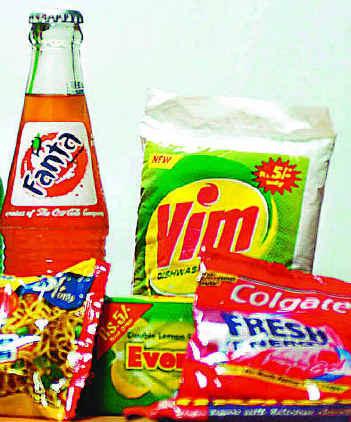UNTIL the slowdown began, it would have been difficult to imagine that household names in the Fast Moving Consumer Goods (FMCG) business, such as Tide, Pepsodent or Surf, would actually be using price cuts to lure consumers.
After all, until a couple of years ago, consumers of FMCG products were pretty much resigned to regular increases in the selling prices of these brands year after year.
But the slowdown in demand has changed all that. What began as a promotional binge (remember all the buy-two-get-one-free offers?) has now clearly snowballed into overt discounts on selling prices of some FMCG products. Surf Excel, Tide, Colgate and Pepsodent are just a few of the FMCG brands that recently hacked their selling prices to woo consumers.
A ball for consumers: This is no doubt good news for consumers. It is a sign that they are finally reaping the benefits of healthy competition in the FMCG business.
Traditionally, key FMCG categories, such as toothpastes, soaps and detergents, have been dominated by just one or two large players which have dictated the selling prices by virtue of theirstranglehold on the market. But a growing tribe of local and regional brands has seriously threatened the established giants. This has injected a healthy dose of competition into the business.
Near term dent: For the key FMCG players, the recent bout of price competition is likely to dent their near-term financial performance. The lower realisations resulting from price reductions could turn single digit sales growth figures into the negative territory over the next couple of quarters. Profit margins too can be dented, as they are not able to pass on input price increases.
Broadening the markets: But, over the long term, the recent price reductions may actually pan out in favour of the players. Some sacrifices on the price front may be just what the industry needs to broaden the market for some FMCG products and perk up usage for others.
For some time now, there has been an irreconcilable gap between the undoubted "potential" of the Indian market, as captured by the penetration (reach) and per capita usage (consumption) numbers, and the actual sales notched up by the FMCG industry.
Products such as shampoos and cosmetics even now reach less than half of all Indian households. For high-penetration categories such as soaps, detergents and toothpastes, the average Indian usage is far below that of even neighbouring Asian countries.
Improving affordability: So, what has been stopping consumers from splurging on FMCG products? Affordability appears to one major obstacle. There is enough indirect evidence of this. Whether it is Nirma soap, Anchor white toothpaste, Fairever fairness cream or Colgate Herbal toothpaste — some of the most successful new products of the past three years have had one common thread running through them.
When launched, each of these brands was priced at a discount to the comparable offerings already available in the market. This suggests that consumers are willing to try out even an entirely new name, if it comes at a low price.
Riding on low unit packs: Then, there is the success of the low-unit pack strategy. Over the past five years, the penetration of shampoos into Indian households has moved up sharply, as consumers have taken to scaled-down sachet packs of the big brands.
Today, around two-thirds of total shampoo volumes are sold in sachets. Nestle's Rs 2 Chocostik (a scaled-down version of chocolate), Britannia's Tiger biscuits priced at less than Rs 5... There are many more other instances where an affordably priced version of a big brand has delivered the goods — in terms of pepping up volume growth.
Right idea at last: All this suggests that companies such as Hindustan Lever, P&G Hygiene and Colgate-Palmolive India may have finally latched on to the right idea when they slashed selling prices on some of their major brands to woo consumers.
The price cuts may depress financial performance in the near term and lead to one more round of de-rating for FMCG stocks.
It is a strategy that may be necessary for survival at a time when several extraneous factors are forcing consumers to tighten their belts.
But if the price cuts really manage to bring new consumers into the FMCG market or change the way consumers use FMCG products for good, the players may be able to reap rich dividends when economic fundamentals do stage a revival.





No comments:
Post a Comment